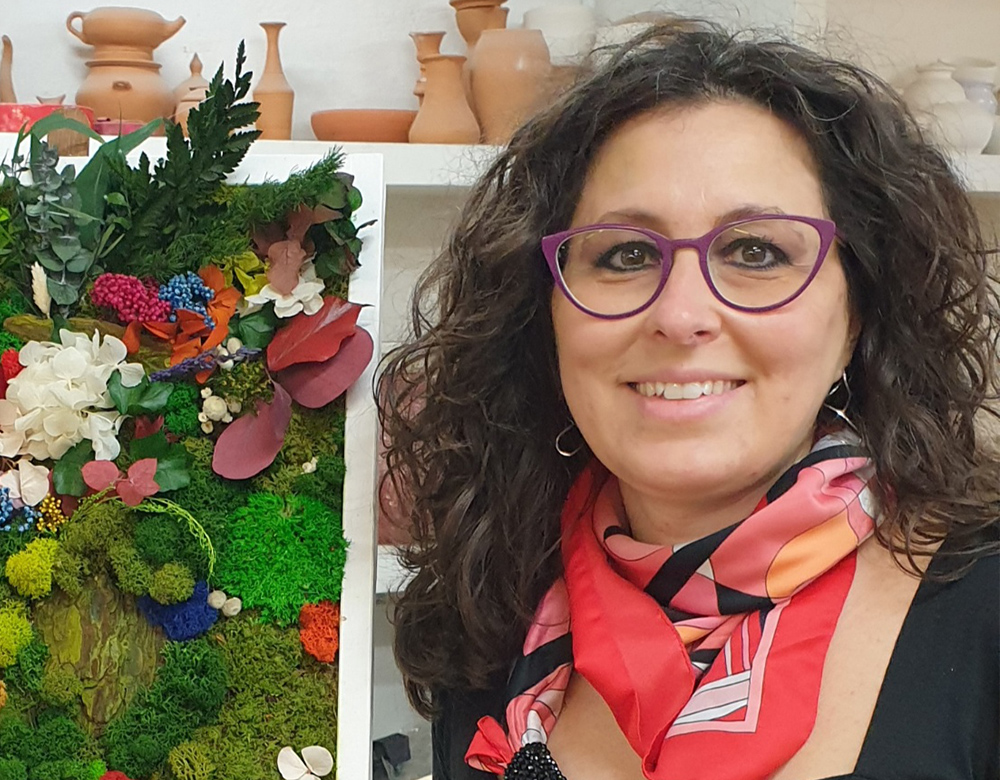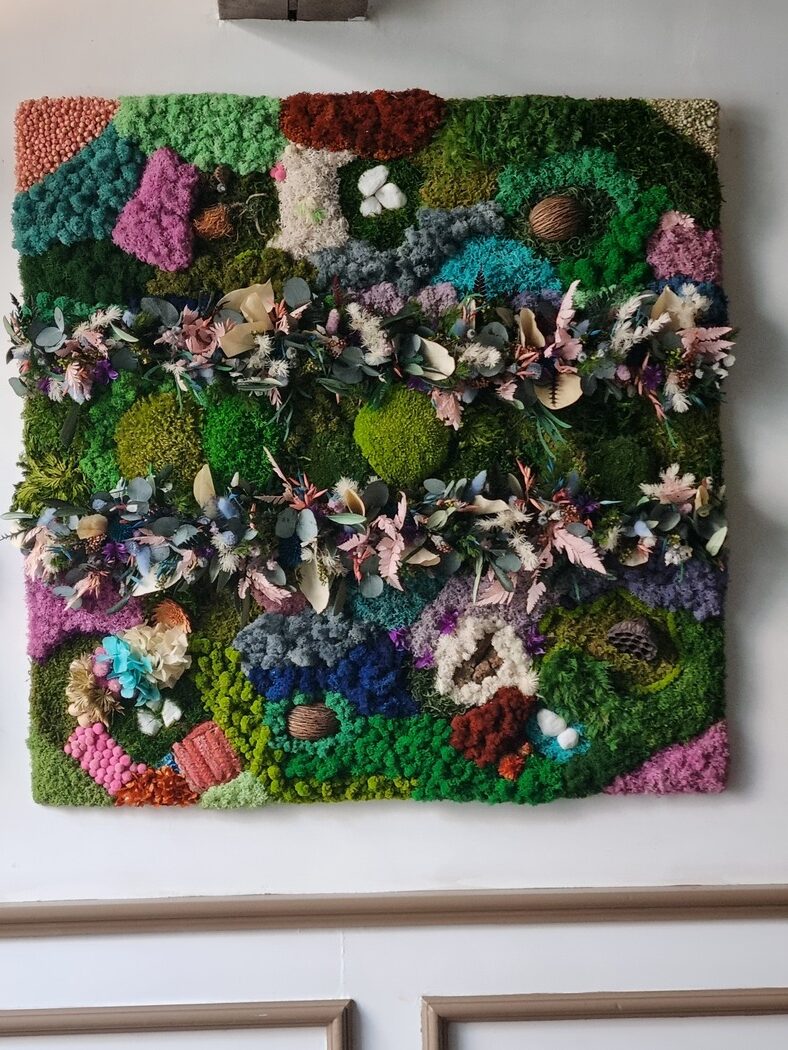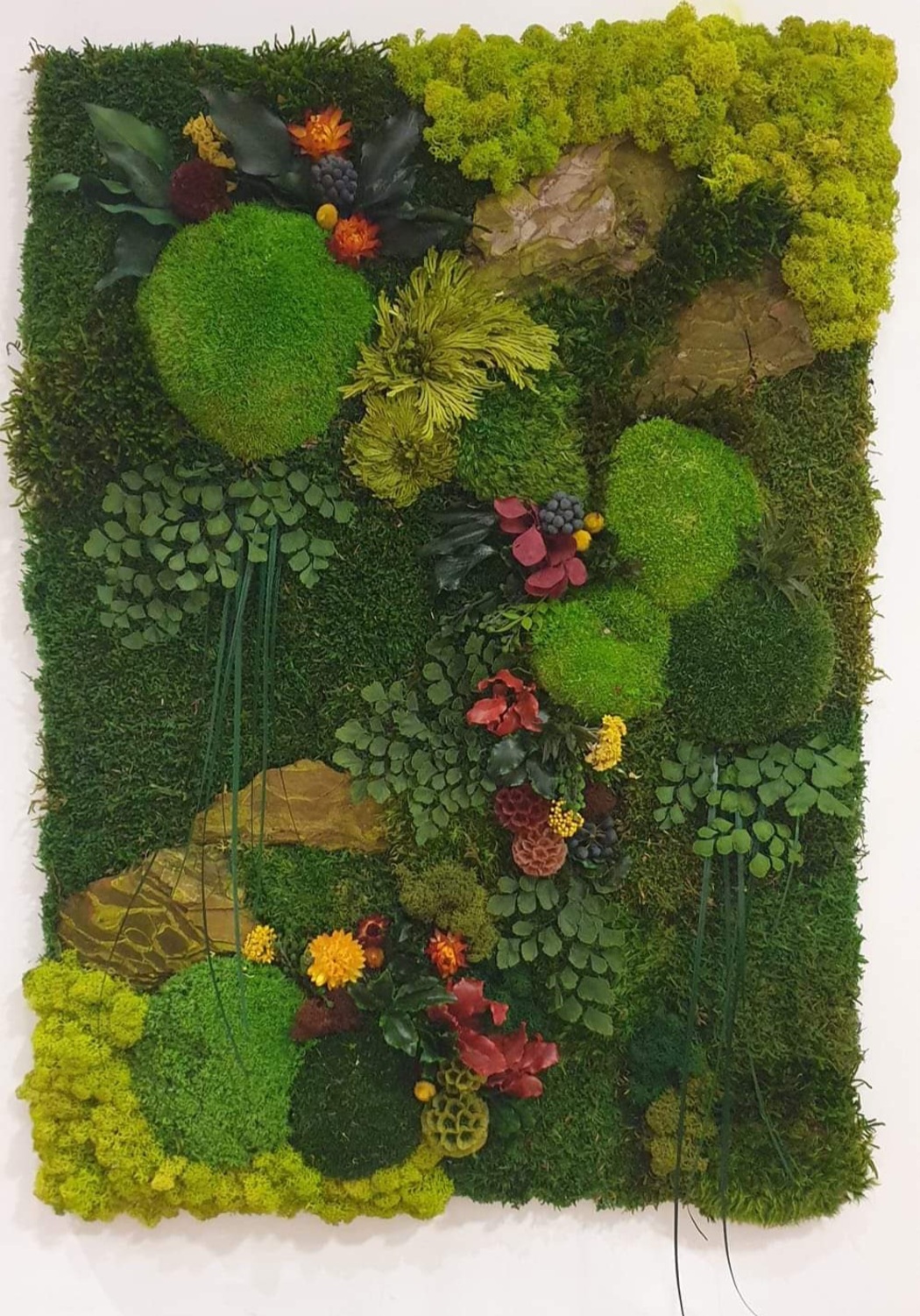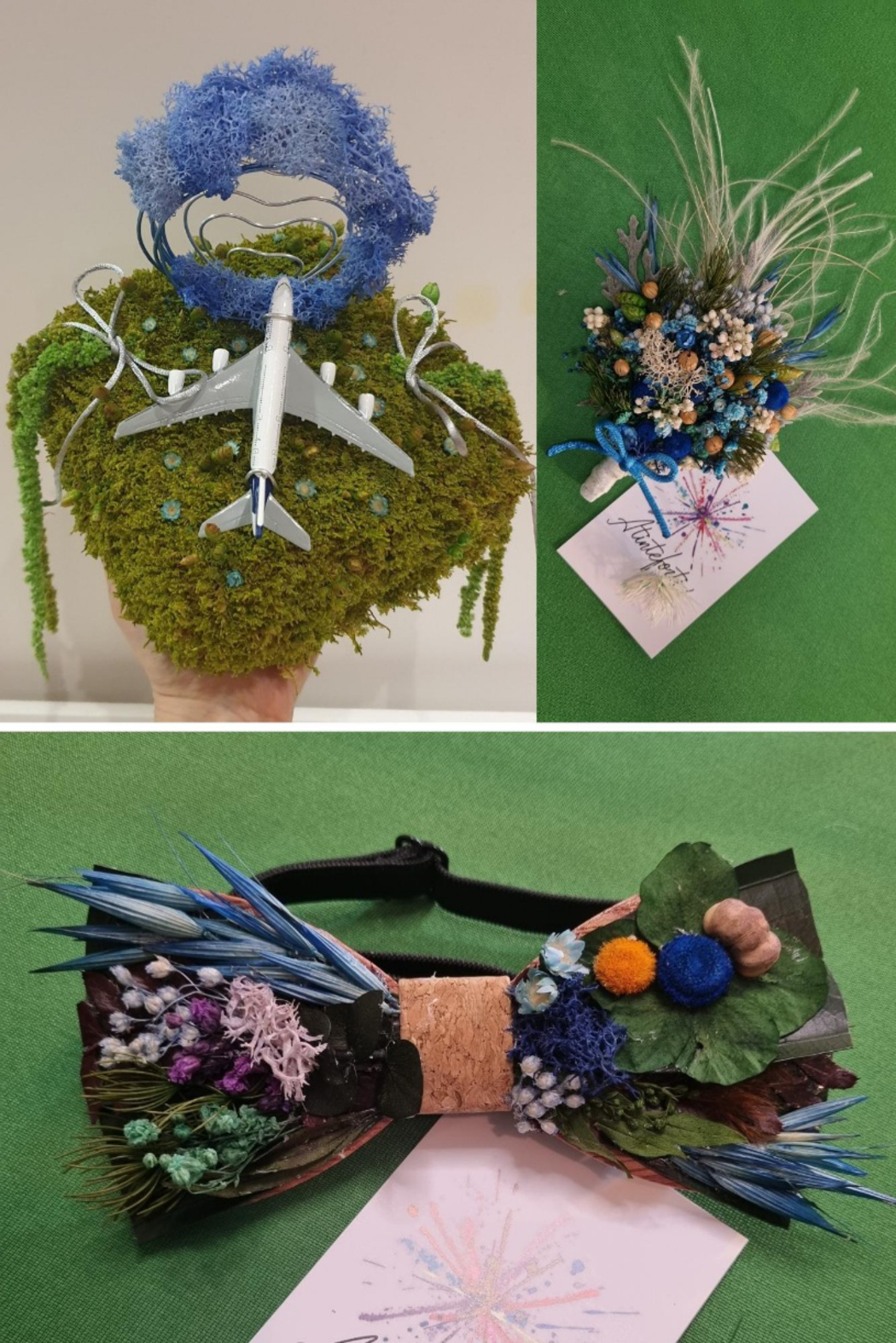Fabiana Sorrentino
Year of birth: 1975
Where do you live: Ostia
Your education: I graduated in Cultural Assets Preservation and specialized in Cultural Management
Describe your art in three words: creative, hard coloured and passionate
Your discipline: I work on several production lines: home design, ceremony and personal and fashion accessorizes
Website | Instagram

How did your Journey in the World of art begun?
I’ve been passionate about crafts since I was a girl. I loved creating original carnival masks, unique Christmas decorations, and handmade personal gifts for friends and family. I had a large box filled with recycled ribbons, flowers, boxes, fabrics, broken necklaces, and any object that could be reused. I was always full of ideas and made sure they were well-executed and beautifully packaged.
Following my passions, I attended various practical courses over time. My organizational skills led me to event planning, where I combined my creative and managerial talents.
How did you transition from working in event management to focusing on moss art?
At one point, I pursued my dream of organizing art-inspired weddings and events. To achieve this, I needed to understand both the creative and managerial aspects, so I took courses in management, sketching, floral design, and even sewing. However, I eventually realized that wedding planning wasn’t sustainable for my family and me.
My passion for handmade crafts led me to moss art. Engaging in artistic and creative activities, especially after becoming a mother, helps me stay connected to my aspirations, passions, and desires. My atelier is my “happy place,” where I can forget my problems, view the world through a vibrant lens, and inspire others to do the same.
 Fabiana Sorrentino | Patchwork | 2025
Fabiana Sorrentino | Patchwork | 2025
Can you explain the creative process between your moss and lichens artworks? How do you decide the colors and elements that come together in each piece?
Before creating a moss artwork, I usually start with a sketch, which I trace on paper and then transfer onto wood, especially if the pieces are meant to be displayed together. My first priority is to determine the focal points of the piece: will there be a single center of observation, or multiple ones arranged diagonally, in a spiral, or in waves?
Once the focal points are established, I decide on the composition. This involves choosing whether to use only lichens or to incorporate other elements like plants, flowers, and moss, some of which require a sponge base. I don’t plan everything in advance, as the evolving artwork often inspires new ideas.
I don’t favor monochromatic lichen works; I prefer vibrant, colorful expressions using plants and flowers. My style is baroque, rich in natural elements and dense in composition.
The colors are chosen through various methods: by combination (pairing elements that complement each other), by selection (matching shades and tones of a specific color season), or according to specific requests. In the latter case, I provide a wide range of elements in the required colors. Generally, compositions are more balanced when they include large, medium, and small elements, similar to floral arrangements or table settings.
Ultimately, I rely on my aesthetic sense and my “horror vacui”—the fear of empty spaces. I rarely stop adding elements to a piece if I feel it lacks balance or fullness.
Your works often explore the theme of “flowering.” How does this concept reflect your personal journey and growth as an artist?
My creativity and artistic sense are innate, but recognizing and defining myself as an artist has been a long and challenging journey. I’ve faced periods of great distress, such as pursuing unsustainable ideas or having to put my dreams on hold due to pregnancy. There were times when I felt I had nothing more to offer the world because I couldn’t find the space or energy for my passions.
When I was diagnosed with depression, I realized that creating art was my therapy and a necessity for my well-being. I knew I had something to offer as an artist, so I sought psychological help to overcome my blocks and self-sabotage. I found a space for my studio, began meditating regularly, and immersed myself in moss art.
This was my “blossoming” moment. By sharing my story on social media, I hope to inspire other women to embrace their true colors and show themselves to the world. My works embody the dignity and strength of my creative and personal journey, transforming my path into art that I proudly share with the world.
 Fabiana Sorrentino | Il Paesaggio Di Pindaro | 2025
Fabiana Sorrentino | Il Paesaggio Di Pindaro | 2025
What role do your flowers, moss and lichens play in your art? How do you view this Natural Elements in the context of your creations?
They are like colors for a painter—brushstrokes that add texture and depth, reflecting the varied nature of humanity. My artworks are unique creations, each different from the other, mirroring the personal discovery and flowering process of individuals.
You have mentioned the importance of color and experimentation in your work. How do you approach experimenting with new materials or techniques in your art?
I might be considered more of a craftsman than an artist in some aspects of my work. It has often been suggested that I approach potential customers as a merchant, offering solutions to their problems and needs. While I have tried this approach, it never felt right to me. The craft approach aims to reach a wide audience with skills and precision, creatively solving practical or aesthetic problems and replicating solutions for multiple people.
However, I use art and creativity primarily as expressive, communicative, and aesthetic tools, without any ambition for widespread dissemination. Each work is unique and unrepeatable, aiming to inspire and emotionally engage viewers. The “beauty” you buy in an artwork is the feeling you had the first time you looked at it, as if it spoke to you.
From a craftsman, you buy a creation for its use and placement; from an artist, you buy the pleasure of owning that piece of art. Artists can only value their works after finishing them, as they need to change and insert elements until satisfied. Artisans, on the other hand, work within predefined figures decided with the customer, which would be very limiting for me stylistically.
Can you tell us more about the symbolic meaning behind the materials you use and how they connect to your broader artistic message?
I consider myself more of an artist than a craftsman because the experimental and aesthetic aspects of using raw materials prevail over practicality or logic. For example, I have mounted works on leather bases instead of wood, despite the assembly and exhibition challenges posed by a non-rigid support.
Additionally, I created a type of moss processing called “raso,” which involves meticulously shredding lichens to form a frothy, smooth texture. I love using moss roots, which many people discard or consider “ugly” without the domed head of quality lichens. Although the composition time is longer and the technique can be risky, it’s an artistic experiment with aesthetic implications that I cherish.
 Fabiana Sorrentino | Fabiana Sorrentino works
Fabiana Sorrentino | Fabiana Sorrentino works
What has been the most significant challenge you have faced while creating moss art, and how have you overcome it?
Stylistically, the greatest challenge has been working on large surfaces for the first time. Filling without weighing down and harmonizing works aesthetically without being repetitive, given my rich stylistic figure, could have been a failure. I believe I have overcome this challenge, but the true judgment lies with the observer of my 80 by 80 cm triptych.
To solve these issues, I maintained some constants in the composition for continuity (e.g., certain natural elements are present in all three paintings) and varied others for movement (e.g., the nodal point, the richest band in the three squares, changes position from top to middle to bottom).
Emotionally, the hardest challenge was confronting the sustainability of my “business.” My high number of hours per work are not easily “countable” and are seen as a “constant loss” by others.
I reminded myself that:
– What is good for others doesn’t necessarily have to be good for me and vice versa.
– I don’t need anyone’s consent if creating is what I want to do.
– Creating is my process to find myself, my well-being, and my pleasure, and this has immeasurable value.

Leave a Reply
You must be logged in to post a comment.